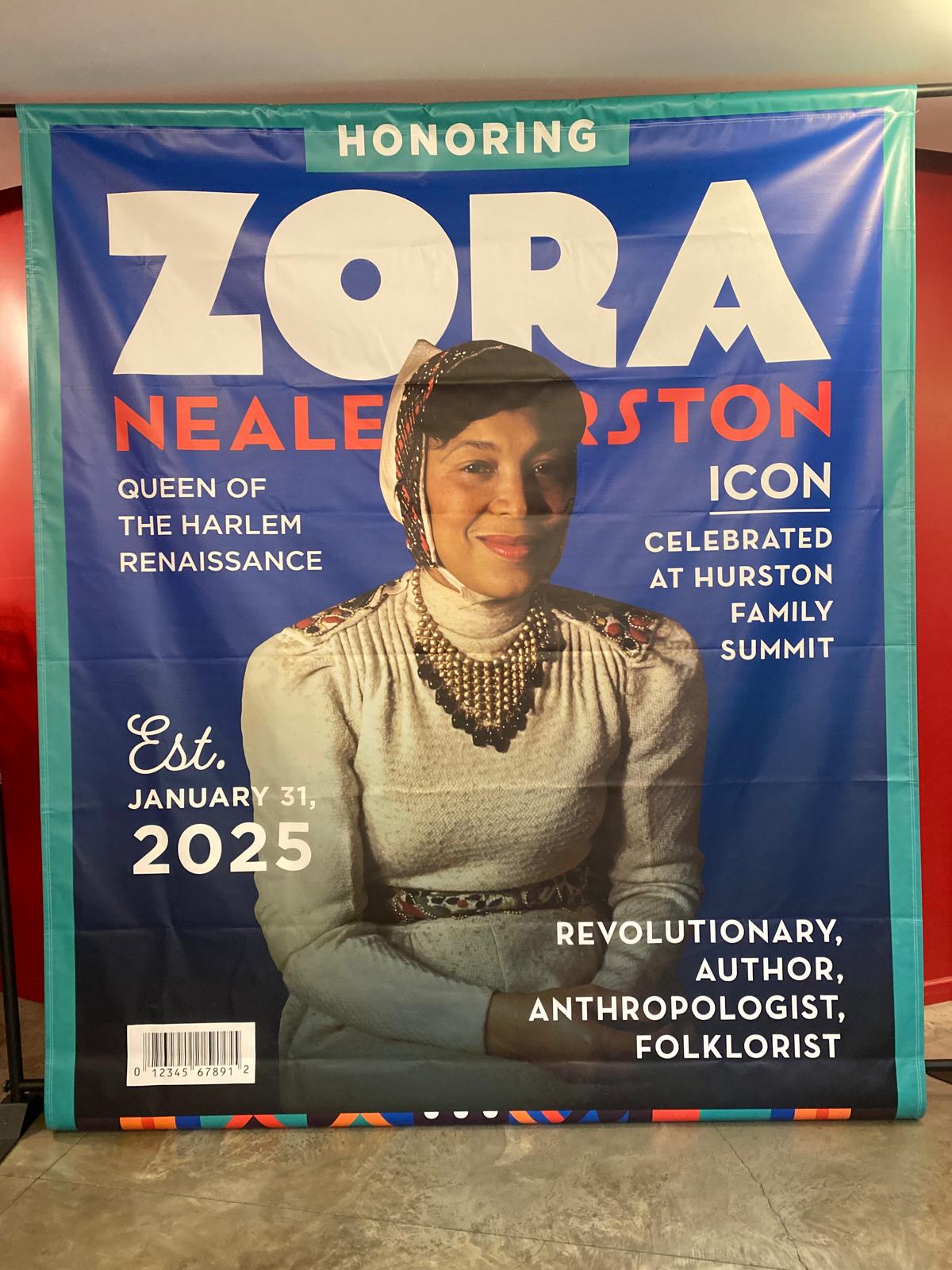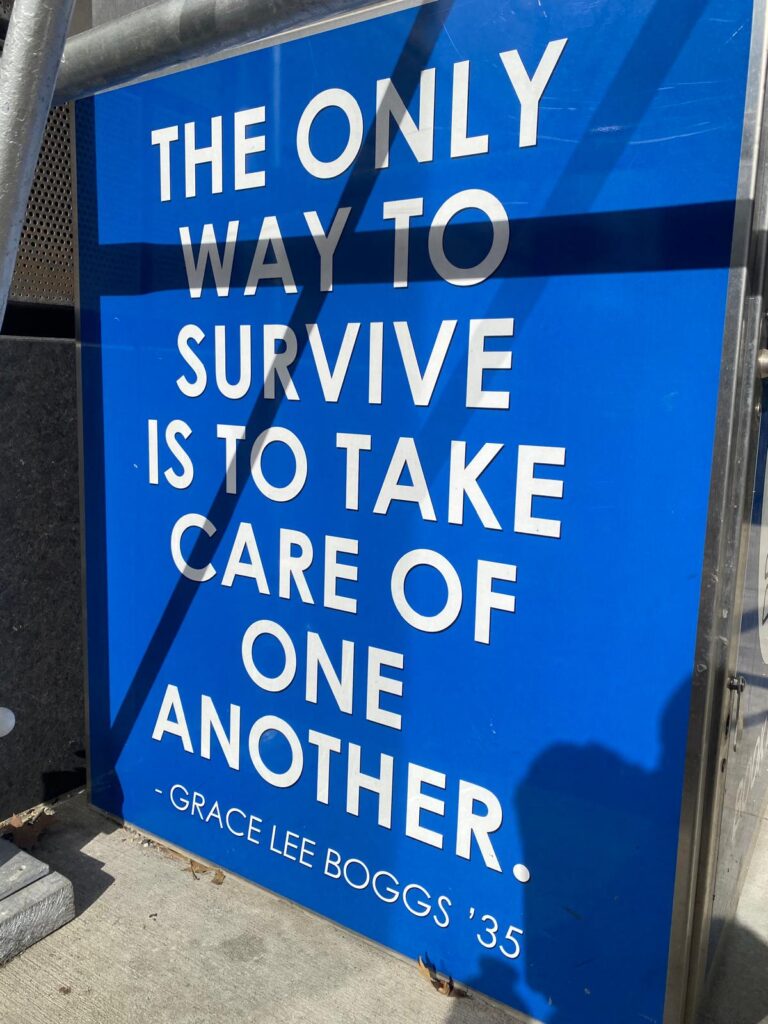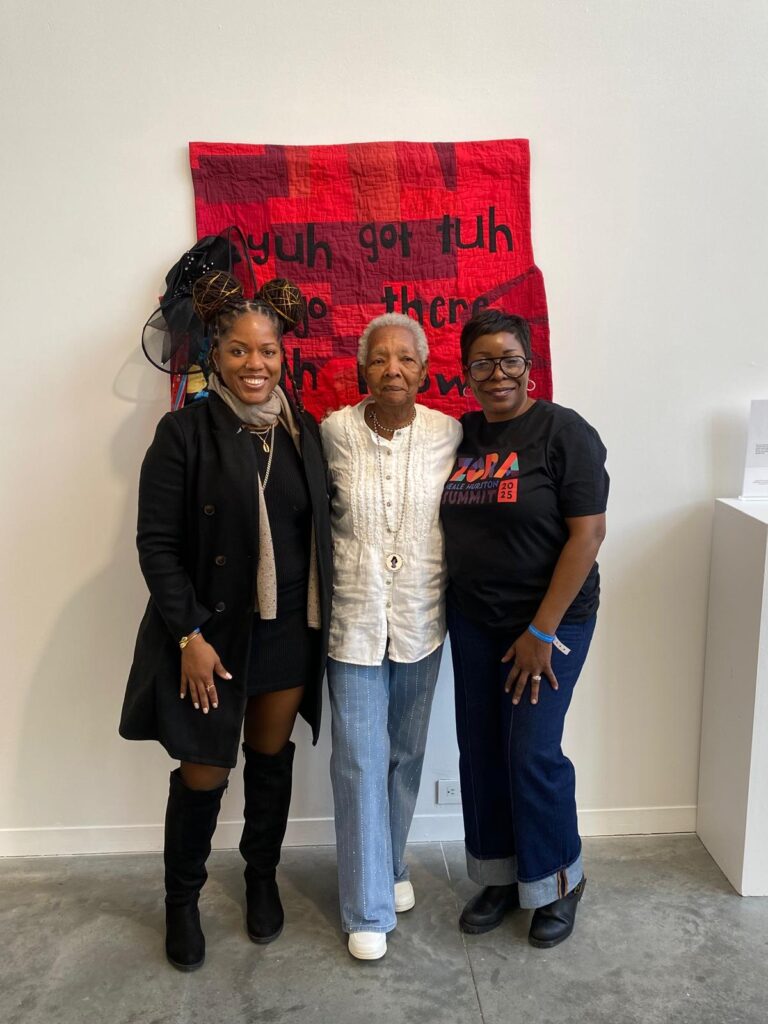Gather the People: Building Community in Zora’s Footsteps

Me: “It ain’t there!”
Her: “It’s not…there!”
Her is Tanya Birl Torres. She’s from Canada. I’m from Louisiana and Savannah. We’re so different, but so alike in the ways that matter most to me. (We even have the same sage green bedroom wall color.) We met at the incredible Zora Neale Hurston Summit.
I was EXHAUSTED before our call. Utterly. Our virtual catch-up pushed back some of my sleepiness. (I’d been up since 2:30 that morning, went to the gym from 4-6, took my daughter to school, grocery shopped, made breakfast and ate, showered, then hopped on our call. I could’ve slept after the call, but I was too excited. I learned a lot during our conversation and related to even more. Recipe for bliss!
When we started the conversation, she asked how I was doing. I shared my morning up until that point and how I’ve been regularly waking up in the wee hours and wondering what Spirit wants me to do with that time. Tanya was once told that it’s the witching hour since the patriarchy is still asleep. I quoted Buddhists saying 4am is a meditation hour. She also heard that.
Tanya first visited Savannah three years ago and is visiting Selma again soon. I live in Savannah and visited Selma last year. She first went to Selma six years ago. We talked about all that. Family. History. Fortune. Misfortune. So much. So good. Before our call, she read my book, Women Who Ain’t Afraid to Curse When Communicating with God. Before our call, I listened to Midnight in the Garden of Good and Evil, because she’s choreographing its soon-coming Broadway show.
We talked about her history as a dancer, studying with Alvin Ailey and dancing with The Lion King on Broadway, and why she was hesitant to come back to work in the industry. But her Spirit (and Zora) responded to her hesitation, reminding her that she wouldn’t shrink herself as she might’ve back in the day, because she’s done/doing the work.
“I couldn’t code-switch today, if I wanted to!” she said.
“It ain’t there!” I added, gesturing toward my belly and chest area.
“It’s not…there!”
I resonated with that. I also related to her relationship with Zora. I knew for a long time about Zora authoring Their Eyes Were Watching God and being part of the Harlem Renaissance, but I learned about Zora as the free-woman advocate, proud southerner, afrofuturist anthropologist, filmmaker, playwright, etc., around 2016. Tanya around 2022. And we could both relate to Zora “putting you to work,” as Rae Chesny, my Zora twin and the Zora Neale Hurston Summit creator, be saying.
Zora has been guiding Tanya—putting her to work—when it comes to Midnight in the Garden. It’s a non-fiction novel set in 1981 in Savannah and centered around a murder in the rich white artsy community. Published in 1994, it was wildly successful, became a film in ’97. Tanya is part of a crew that turned it into a musical, and it’s now on its way to Broadway, and Zora has been nudging Tanya to “gather the people.”
Gather the people.
That’s what Krak Teet’s work is all about. What #WeAllCousins is all about. Gathering the people. In the fear and shock around White House decisions and consequences, we must prepare. And our preparations gotta prioritize being in community. Truly being in community. And that will require that we gather, that we come together. “The only way to survive is to take care of one another.” Grace Lee Boggs, who I learned about and fell in love with in Detroit in 2016, said that. The people can be ones you already know, or some new ones mixed in.

Everybody won’t feel called to initiate a gathering. That’s okay. Long as you showing up and both giving and receiving. And everybody won’t gather the same way. Sometimes you won’t even talk the same way. One of you might say “ain’t,” the other might say “is not,” but you’re saying the same thang and you’re committed to coming together and getting it done—whatever “it” is. That’s what it’s all about.
Zora Neale Hurston was a genius at gathering the people. Whether through her writing, her fieldwork, or her presence, she brought folks together. Their Eyes Were Watching God ain’t just a love story. It’s a testament to the power of community, of front porch storytelling, of people sharing their lives with one another.
Zora’s anthropological work was another way she gathered the people. She traveled through the South, the Caribbean, and beyond, collecting stories, songs, and traditions. In her book, Mules and Men, she sat at the feet of storytellers, listened, and recorded their wisdom. She was intentional about how she gathered these stories, embedding herself within communities, eating with the people, laughing with them, earning their trust.
Zora also gathered people through her theatrical work, which most folk don’t know about. In the 1930s, she directed and staged folk musicals, drawing on the rich traditions of the Black communities she spent so much time with. She didn’t just document folklore; she brought it to life. The Great Day, the play she presented at the John Golden Theatre, is a prime example. It wasn’t a solo act—it was a collective creation, bringing together voices, movements, and rhythms that spoke to the essence (and the togetherness) of Black life.
Even in her later years, when she faced hardship, she still found ways to gather and uplift. She worked as a teacher, shaping young minds and planting seeds for future generations to continue the work. She knew that gathering wasn’t just about physical presence—it was about sharing knowledge, building relationships, and ensuring that what mattered endured.

And as shared in our article about Zora’s wrongful arrest, she knew that you need a village before shit hits the fan. We can climb high, but we can fall hard too. And when they knock your crown off, you need more than accolades to hold yourself together. You need a village, people who give a damn about you. Not your fame. You! And you need to have had already created this for yourself, which she did.
Just as Zora did and as Tanya is doing, we gotta gather the people—with intentionality, of course—knowing that our collective survival depends on it.
P.S.: Tanya kept mentioning Broadway “houses.” I asked and learned. The “houses” are the theaters. There are currently 41 Broadway houses/theaters with about 3 owners between all of ’em. It takes about 7-10 years before a show is first created ’til it’s on Broadway. Shows are accepted onto Broadway primarily through a producer securing then renting a Broadway house from its owners then raising funds to stage the production.
This insight gave me so much more respect for folk, especially Black folk, who manage to get their work on Broadway because it pretty much guarantees attention from people all over the world. So special shout out to Zora who got her play on Broadway in 1932 and to Lorraine Hansberry, who created Raisin in the Sun, the first drama by a Black woman produced on Broadway in 1959.
If this work resonates with you, help us keep it going. Our summer camp empowers middle schoolers to explore community, culture, and creativity—all at no cost to families. Your support makes this possible. Donate today and be part of the village that nurtures the next generation.

